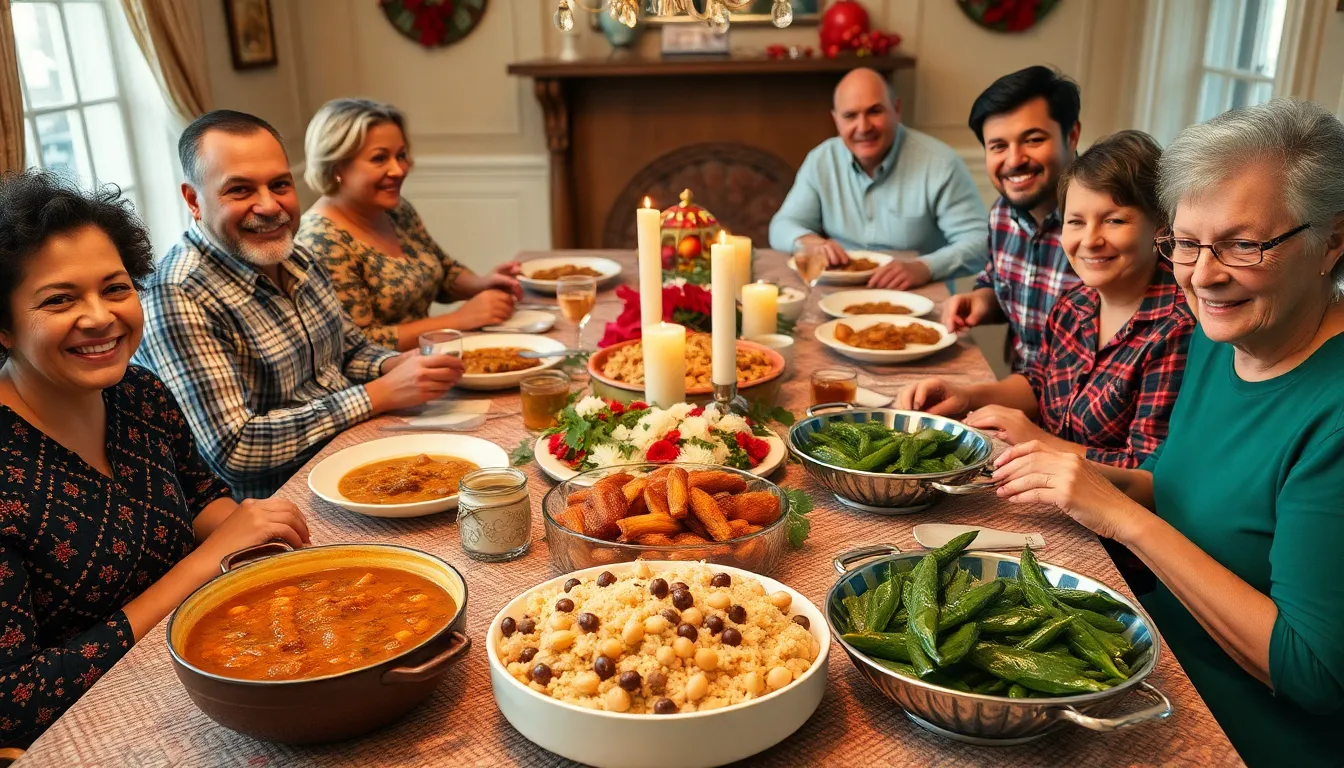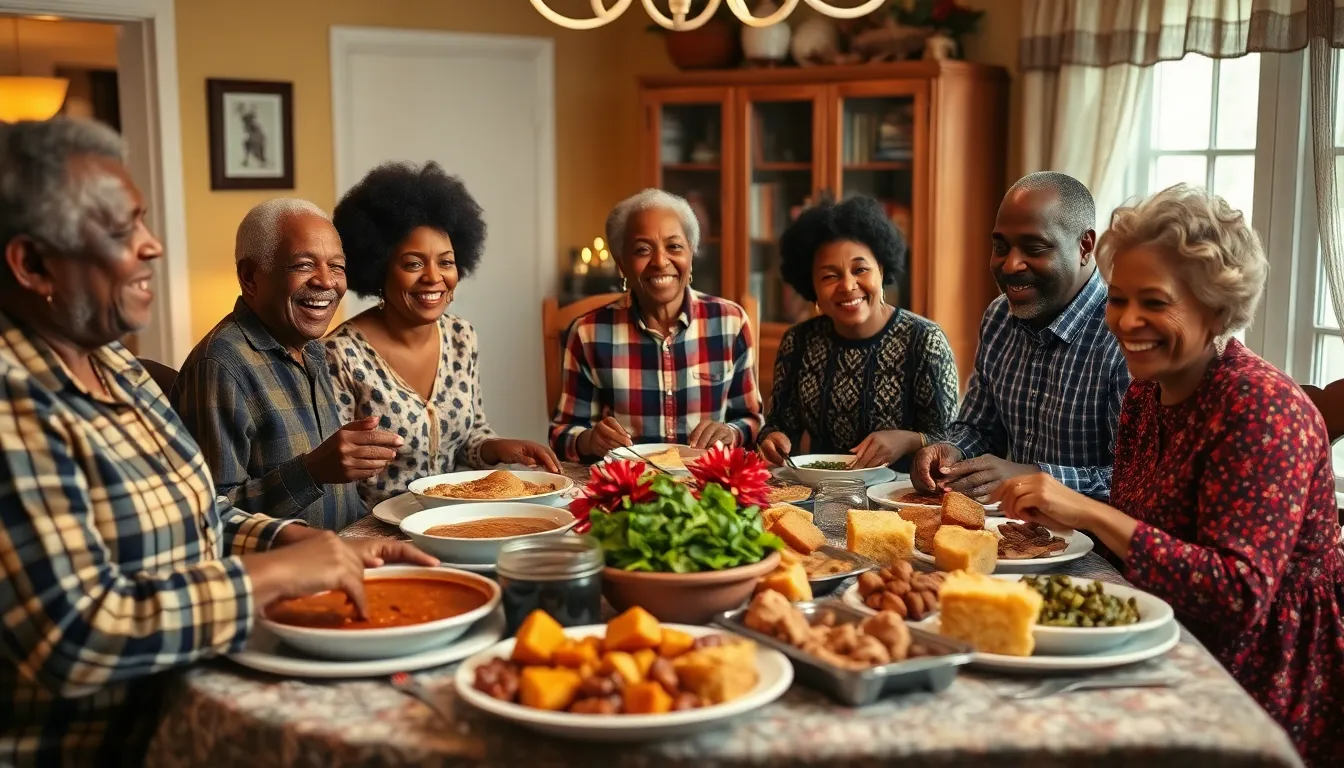As the clock ticks down to midnight in South Carolina, the air fills with anticipation and the mouthwatering aroma of traditional dishes. Forget the boring resolutions; it’s time to dig into a feast that promises good luck and prosperity for the year ahead. In the Palmetto State, New Year’s Day isn’t just about fireworks—it’s a culinary celebration steeped in rich history and delightful flavors.
From black-eyed peas to collard greens, each dish carries its own story and a sprinkle of superstition. They say eating these foods will bring you wealth and health, so why not indulge? After all, who wouldn’t want a little extra luck on their side? Join in as we explore the delicious customs that make South Carolina’s New Year’s food traditions a feast to remember, where every bite is a step toward a prosperous year.
Table of Contents
ToggleOverview of South Carolina New Year’s Food Traditions
South Carolina’s New Year’s Day food traditions reflect a blend of rich history and cultural significance. People typically enjoy black-eyed peas as a staple dish believed to attract good fortune. Collard greens accompany this dish, symbolizing prosperity through their green color. These foods carry deep-rooted beliefs that date back to African American customs and Southern heritage.
Tradition dictates that families gather to savor these dishes together at noon. Many also prepare cornbread, which provides a comforting and hearty element to the meal. Hoppin’ John, a popular dish made with black-eyed peas, rice, and pork, often graces the dining table. Each ingredient plays a vital role in the symbolism of wealth and luck for the upcoming year.
Celebrations sometimes expand to include fried chicken or roast pork, adding variety and flavor. As midnight approaches, some families toast with champagne or sweet tea, solidifying bonds and guiding spirits into the new year. Friends and neighbors often share dishes, fostering a sense of community and togetherness.
In essence, the New Year’s Day meal in South Carolina emphasizes harmony, tradition, and the hopes of a prosperous year ahead. Engaging in these culinary practices connects residents to their roots and showcases a vibrant cultural tapestry. Each bite serves as a reminder of the importance of family, community, and the aspirations held for the future.
Traditional Dishes for New Year’s Celebrations

Traditional dishes play a crucial role in New Year celebrations in South Carolina. Family gatherings often revolve around specific foods believed to bring good fortune and prosperity.
Hoppin’ John and Its Significance
Hoppin’ John comprises black-eyed peas, rice, and pork. This dish symbolizes wealth and luck, with roots tracing back to African American culinary traditions. It appears at many New Year’s Day tables, offering a blend of flavors and cultural history. Families create variations of Hoppin’ John, incorporating different meats or spices. Eating this dish is said to ensure prosperity in the coming year, making it a staple for celebrations. Enjoying Hoppin’ John fosters family unity and reflects deep-seated traditions.
Collard Greens and Their Symbolism
Collard greens serve as a traditional side dish during New Year festivities. These greens represent money, embodying the hope for financial prosperity in the new year. Cooked with seasoning and sometimes smoked meat, collards add both flavor and meaning to the meal. Many families incorporate them into their celebration menus, emphasizing the connection between food and fortune. Eating collard greens on New Year’s Day links individuals to Southern heritage, reinforcing family ties and cultural identity. Embracing this tradition underlines the importance of shared hopes for a fruitful year ahead.
Regional Variations in New Year’s Foods
South Carolina’s New Year’s food traditions reflect the diverse cultural influences present in the region. Each variation highlights local ingredients and customs, creating a vibrant culinary landscape.
Coastal Influences on Traditional Dishes
Coastal areas in South Carolina often incorporate seafood into New Year’s meals. Shrimp and grits frequently appear on tables, offering a delicious twist on the typical fare. Oysters also play a significant role, especially in Lowcountry celebrations, symbolizing richness and bounty. Many families enjoy dishes featuring rice seasoned with local spices alongside collard greens and Hoppin’ John, enhancing the meal’s flavors and meaning. These coastal specialties connect diners to the region’s fishing heritage, ensuring the spirit of celebration remains anchored in tradition.
Upland and Mountain Specialties
In the Upland and Mountain regions, culinary customs shift to showcase local products. Dishes featuring hearty meats, such as country ham or smoked sausage, are common, providing a robust flavor profile. Families often prepare stews or casseroles filled with seasonal vegetables, emphasizing warmth and comfort. Grits continue to be a staple, often paired with both meats and greens. These meals symbolize community and togetherness, as families gather to enjoy the hearty fare. Cultural influences from Appalachian gastronomy weave through these traditions, underscoring the importance of heritage in New Year celebrations.
Family and Community Customs
South Carolina’s New Year’s Day celebrations emphasize food traditions that bring families and communities together. Gathering around the table creates a space for shared hopes and aspirations for the coming year.
Gathering Traditions and Celebratory Practices
Families often come together at noon to enjoy traditional dishes. Many include black-eyed peas and collard greens, along with cornbread and Hoppin’ John. These meals symbolize good fortune and prosperity. Friends and neighbors frequently join the festivities, reinforcing community bonds. Midnight toasts with champagne or sweet tea mark another celebratory moment, highlighting unity and togetherness.
The Role of Food in Family Bonding
Dishes like Hoppin’ John and collard greens play a crucial role in fostering family connections. Each meal serves as a reminder of cultural heritage and shared history. Family recipes often get passed down through generations, strengthening family identity. The preparation of traditional foods invites collaboration and togetherness, creating lasting memories. In this way, the act of sharing meals deepens relationships and cultivates a sense of belonging within the community.
South Carolina’s New Year’s food traditions offer a rich tapestry of flavors and meanings that connect families and communities. Each dish tells a story of heritage and hope for prosperity in the year ahead. The rituals surrounding these meals not only celebrate culinary excellence but also reinforce the bonds of family and friendship.
As residents gather to share these time-honored dishes, they’re reminded of the importance of togetherness and tradition. The unique regional variations further enhance this experience, showcasing the state’s diverse cultural influences. Embracing these traditions ensures that the spirit of the New Year is celebrated with joy and unity, setting the stage for a prosperous year to come.




